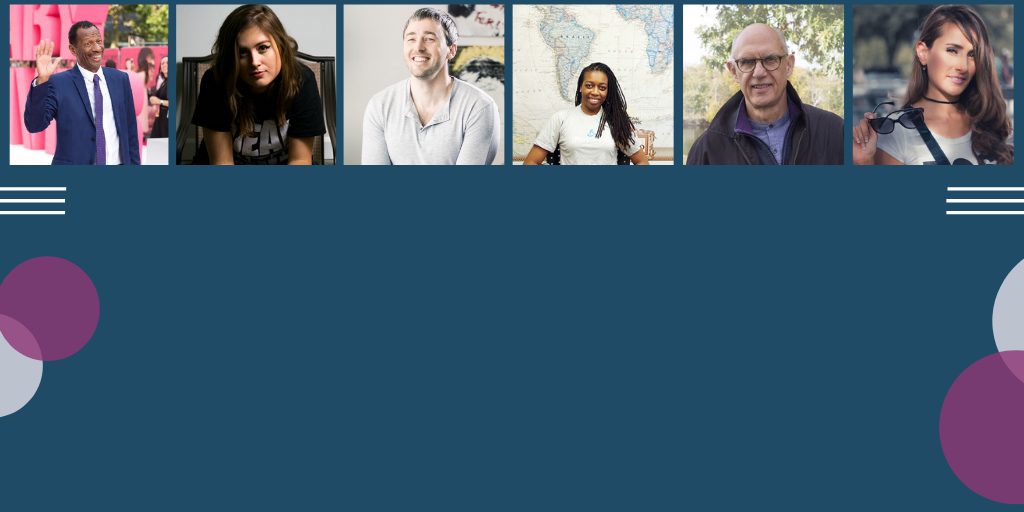John Carroll
“Back in 2006, I was diagnosed with Meniere’s disease. It just suddenly came upon me. I got up in the middle of the night to use the restroom and the world flipped upside down… For about 10 years, I would have flare-ups and attacks every now and then where I just felt off-balance or a bad attack where I would lose it from nausea. In 2017, I woke up one morning and was totally deaf on the right side.”
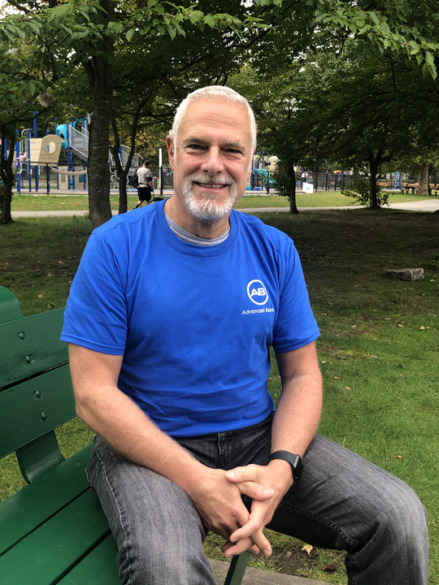
Eric Costanza
“Trysta was born profoundly deaf in September 2005. When she was about 13 months, she had her first side of cochlear implants done. About six months later, she had her other side done. They took wonderfully.”
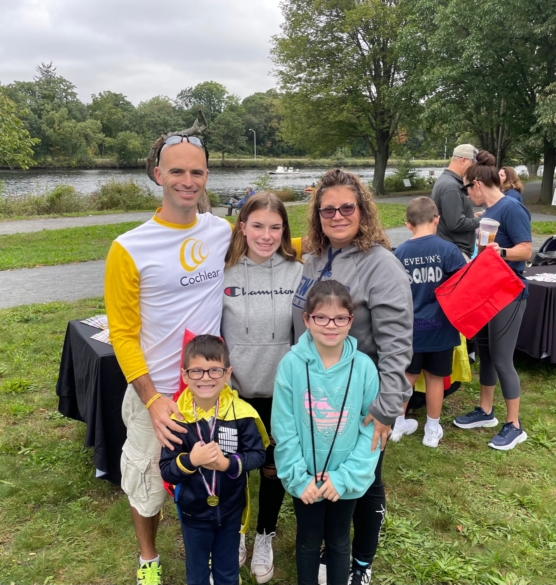
Subscribe to Newsletter
About Faces Behind the Screen
Inspired by the popular photo-interview project Humans of New York, we launched FBTS at the beginning of 2017 to spread awareness about web accessibility. Through photos and interviews, we have been able to share many unique stories that give everyday people a face, a voice, and an opportunity to share their story and perspective.
Our aim is to simply connect the world with these stories, offer a new perspective, hopefully, shatter common stigmas and preconceived notions, and remind everyone that the world wide web, including websites, apps, and other digital interfaces, needs to be accessible for everyone – including people with disabilities.
Follow us on social: Facebook l Instagram l Twitter
Share Your Story or Nominate a Friend
More Stories
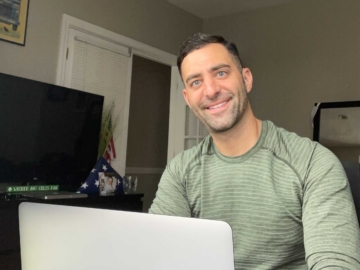
Read Dustin's Story
“It was a gradual decrease where I noticed I started losing my hearing around the age of five years old. I didn’t really even know that I was hard-of-hearing, believe it or not. It was not until I had a hearing exam at school done by the school nurse. One year, I passed with no problem. The next year, they put a board up, and I wasn’t able to read lips… Sure enough, I had profound high-frequency hearing loss in both ears.”
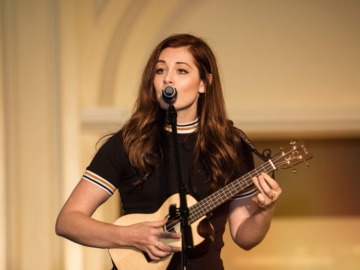
Read Mandy's Story
“I remember sitting in this class, everybody else in the room was way older than me–adults–and they handed me the sheet music they were working on. It was the first time [I was] able to sit in a room, everybody was looking at the same thing, and I could follow along because all the words were there in black and white.”
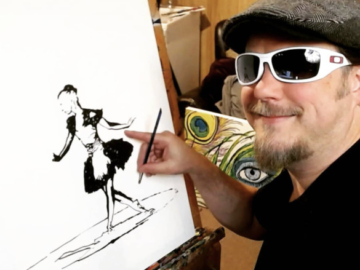
Read John's Story
“In April of 2001, I went to a low vision specialist for the first time. My vision was 20 over 400, which is twice the legal limit for blindness. A couple of months later, it was 20 over 800. Within a month of that, they couldn’t measure my vision anymore.”
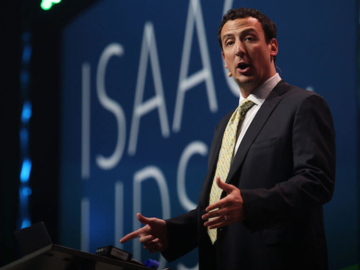
Read Isaac's Story
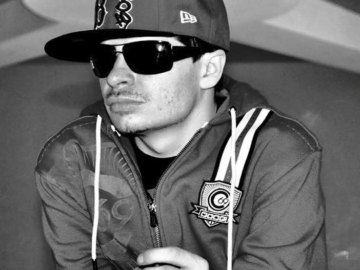
Read Stephen's Story
“Growing up, my mom wouldn’t allow me to use my lack of vision as a crutch. I remember one night, I told my mom when we were watching TV that I was thirsty and that I wanted something to drink.
She asked, “You got two feet right?”
I said, “Yeah.”
And she said, “I’ll tell you what. You go pour yourself something to drink. And if you make a mess, I’ll help you clean it up. But you’re going to try to do it.”
And that’s just how it was. My mom didn’t allow me to be all woe is me and be down on it.”
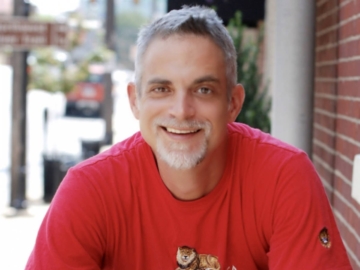
Read Mark's Story
“…In the big cities – there’s more support for the Deaf community. There are more services and more accommodations. In places where it’s like a small town, not so much.”
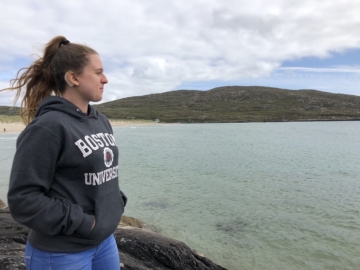
Read Alanna's Story
“It was a pretty unique experience for me at school. I knew I was different. I had to carry around a speaker box because my teacher used a microphone to speak with me. Technology has obviously evolved since then.”
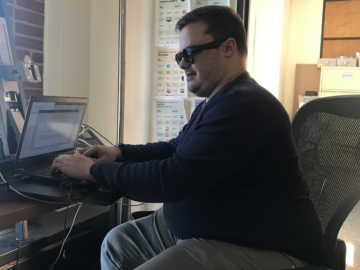
Read Joshua's Story
“With the right tools and an inclusive environment that truly values people, anyone has the chance to succeed. We just need to focus on the positivity of disability, the innovations disabled people bring to the world, and stop telling people they are broken or will always have to make up for a perceived flaw. ”
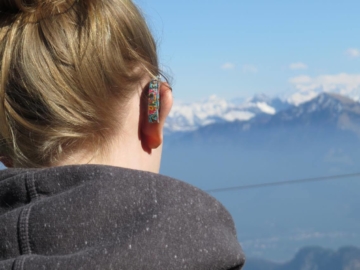
Read E's Story
“There are many misconceptions about deafness and people thinking deaf people can’t do anything, but their hearing loss shouldn’t stop them from achieving their goals.”
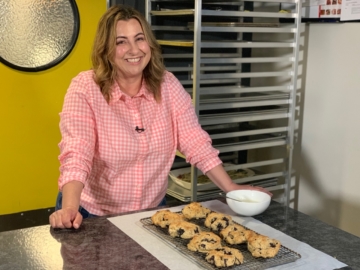
Watch Mary's Videos
“‘Empowerment through food’ means so many things. When you create something, you feel a sense of pride. When we cook, especially with vision loss, it’s a place where we can recharge, regroup, regain our independence, because you don’t need any assistance. With cooking, it’s just you and the food.”
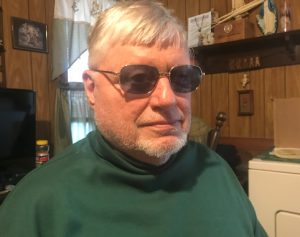
Read Gerard's Story
“Haverhill’s Gerard Boucher joined the US Marine Corp to avoid getting drafted by the US Army. On the wall of his home sits a Bronze Star and three Purple Hearts, so he certainly picked an unusual way to avoid the draft.”
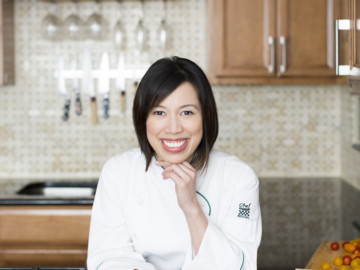
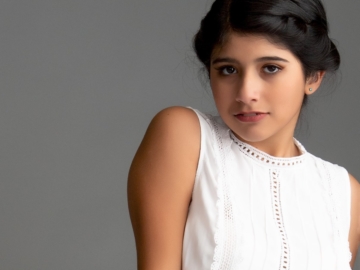
Read Kaylee's Story
“There’s a lot that I wish. I wish that hearing people would understand that we’re people, too. And we can do whatever you can do, too. And we feel emotions. And it’s really hard for us to sit in a room that’s full of people who are talking and having their own conversations and be alone.”
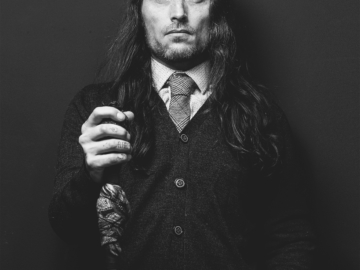
Read Ian's Story
“Photography has opened up so many doors for me. It’s helped me come out as a blind person. It’s the only thing keeping me connected to the world.”
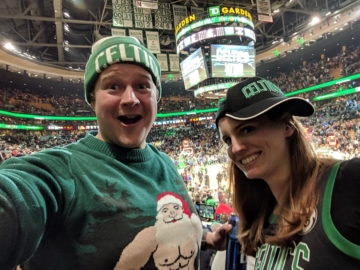
Read Ben's Story
“Lucky that it’s this kind of day and age where accessibility is such a prevalent part of our everyday lives. There are so many things around that are geared towards accessibility that we can take for granted. ”
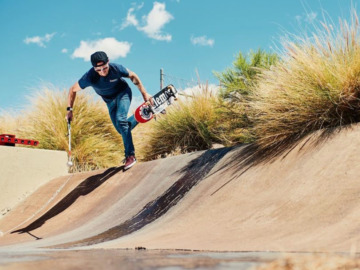
Read Justin's Story
“I would say the journey of losing my sight and skateboarding has been a roller coaster. When I had vision I was a high-performing skateboarder. Then from the age of 20 to 25, I lost a majority of my sight…Around that time, I gave up skateboarding and learned how to be fully blind.”
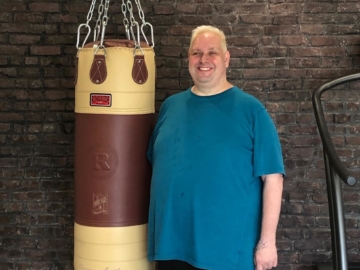
Read Gus's Story
“With exposure to assistive technology and the world of the blind community that I interacted with within my work, I started to restructure. I’m happier as a blind person than I ever was when I was sighted.”
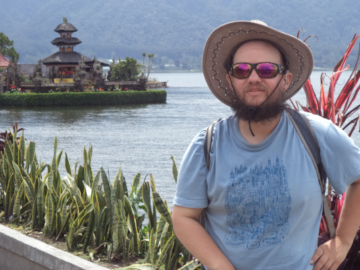
Read Tony's Story
“For me, traveling alone is the ultimate freedom. You can do what you want, when you want. You’ve got no one to tell you what to do or not to do. You don’t have to compromise.”
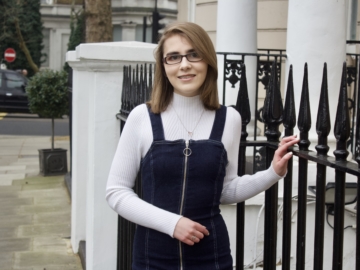
Read Elin's Story
“I started blogging at a time when I was feeling really lonely and isolated because of my vision impairment…I was writing my feelings down in Word documents just for myself but as I became more aware of the concept of blogs, I figured that maybe I could turn what I was writing just for my own benefit to be something more public, something that could perhaps help others who were in a similar situation, so that’s what I did.”
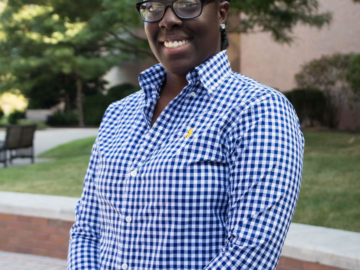
Read Bridgit's Story
“When I went to RIT, it was a huge culture shock. For the first time, I learned about the Deaf community and I was exposed to ASL.”
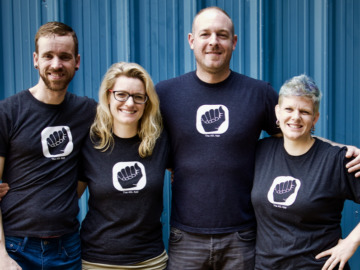
Read ASL App's Story
“We’ve received a tremendous response to our work. People love The ASL App, and it has become a bridge for non-signers and the signing community to connect. It’s for everyone.”
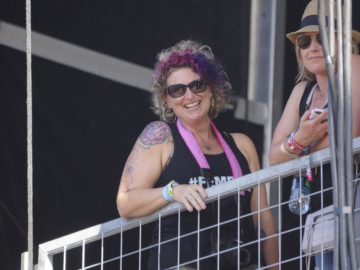
Read Cat Brewer's Story
“If you don’t have someone in your life that is deaf or hard of hearing, who’s never had to struggle to get access to these things, you’re not aware of it. I’m not a comedian or an artist or a musician, and I wasn’t aware of this until I saw and talked to people who are facing these challenges.”
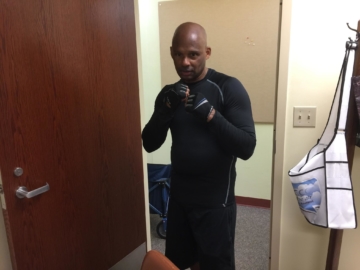
Read Reggie Andrade's Story
“Even to this day, not everything is really all accessible. Many places of business like the grocery store or retail stores are not accessible. If I want to buy clothes in a store, I’m not able to see the size or the price of the item. The print is so tiny that I have to rely on other individuals to assist me in order to make a basic purchase.”
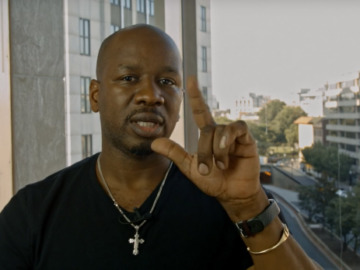
Read DJ Supalee's Story
“It was difficult because I didn’t know sign language at the time. I had to change my life from being a hearing person to a deaf person.”
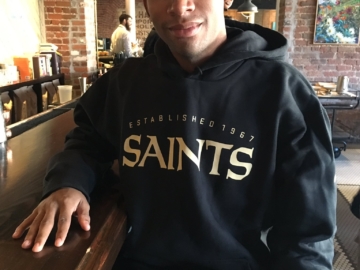
Read Marvin Pearson's Story
One of my proudest moments is just being a leader in my community and being that role model that young kids can look up to. It’s also being a father figure for my son, a great boyfriend, a great son, and a great brother to my family. I want to motivate people with disabilities so they know that they can do whatever they set their mind to. They can overcome any obstacle. That’s what keeps me motivated to keep doing better and provide light for anybody who feels that they’re in the dark.
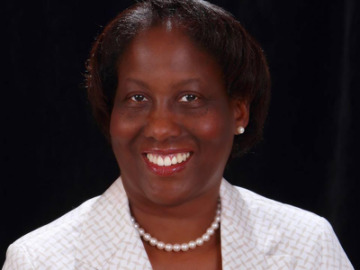
Read Cecilia James' Story
As I sat at my desk for the first time with the digital hearing aids, I became emotional as I realized how much I missed. It felt like I was getting to know myself. This journey continues to be a learning one. It’s made a difference with my hearing, and with me wanting to use my hearing aids.
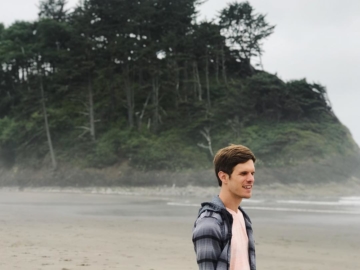
Read Mac Potts' Story
I’m passionate about making others happy with my music. I play and sing for other people’s enjoyment and I take that seriously. I like being able to make people’s day with my talents and it’s awesome that I get to do that as my job and make a living by it.
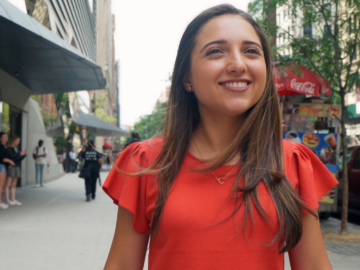
Read Camila Chiriboga's Story
I never knew how meaningful fashion could be. The fashion industry seems like an industry that looks down and judges others. We see things in magazines that tell people they aren’t enough. But I want to use fashion in another way. I want to help people be themselves, express themselves, and be more independent and confident.
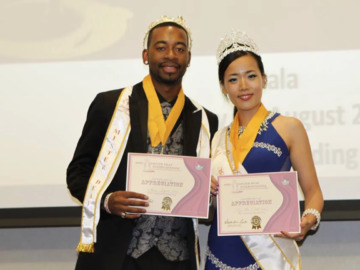
Read Aarron Loggin's Story
You’ve got to show them. You’ve got to say, hey, we’re all equal. The only thing is that you can hear more than I do. That’s the difference. But you have to show the message. Don’t just say the message. You have to show the message. Hey, I want to do this. Hey, I can do this.
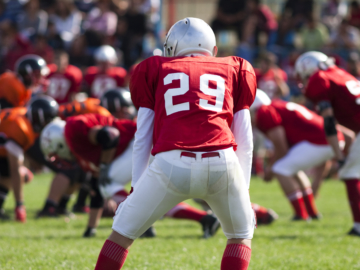
Read Reggie Andrade's Story
“One day in the second grade, I couldn’t see the blackboard. I told my mom about it and she took me to the eye doctor to get tested. I was diagnosed with an eye condition called Stargardt Disease, which was discovered by an optometrist from Germany named Karl Stargardt. Stargardt Disease affects visual acuity and makes it hard to see small print. Even with a disability, I earned a full athletic scholarship to the University of Massachusetts.”
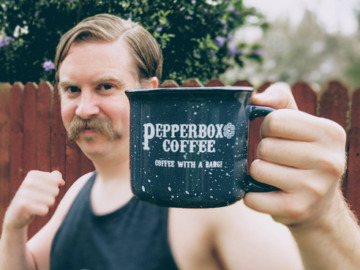
Read Nick Buchanan's Story
“I hope [Pepperbox Coffee] has been a positive impact on the community – I don’t see why it wouldn’t!
I have had people come and ask me how I got it set up and running, what it took to make it possible. It has opened people’s eyes, and I am seeing many new ventures among the Deaf communities striving for their own businesses.”
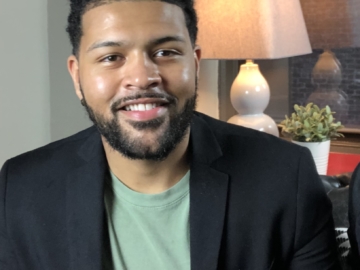
Read Aaron Pagan's Story
Oh, yes. I use captions wherever I can, whether it’s while watching YouTube video, watching TV, Netflix. In college, I used captioning for classes. And the movies – I use it at the movies all the time. It’s not perfect at movies, but it does a good job.
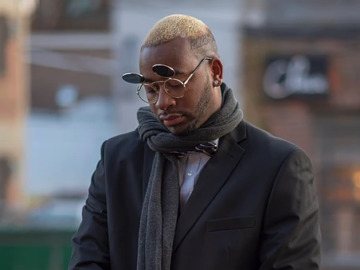
Read Aarron Loggins' Story
““In the mainstream, you don’t have enough of the programs for the deaf or hard of hearing – it’s limited. When I go to Gallaudet, my life changed from there – my sign language, my identity – everything changed and I could build more confidence inside. I was involved with a lot of activities, and I graduated from Gallaudet with my bachelor’s degree in theater arts. I was the first male in my family who graduated from university.”
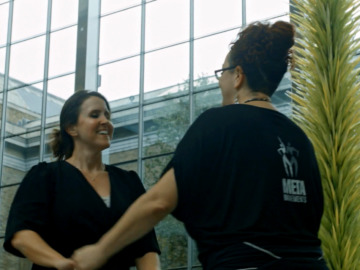
Read Kerry Thompson's Story
““When I’m sitting on the train, people look at me– give me these glances. I feel a lot of people pity me, or they’re confused. So that I, unfortunately, experience discrimination at work, too. When I’m going outside, when I’m dancing even– there’s no place to hide from discrimination. It’s always out there, but I’m always trying to do my best to educate people and to lead by example. And I’m really trying. You know, I really want to try my best to give people a different perspective.”
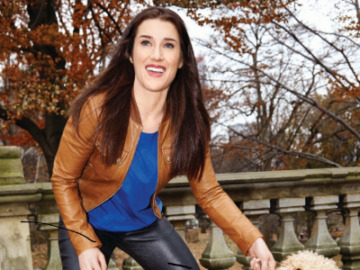
Read Rebecca Alexander's Story
“We take so many things for granted that it’s this idea of pitying people who are losing their vision and hearing, or pitying people who use a wheelchair, or pitying people who may not have…mobility and access, that I think engenders this feeling of being better than, or being more privileged.”
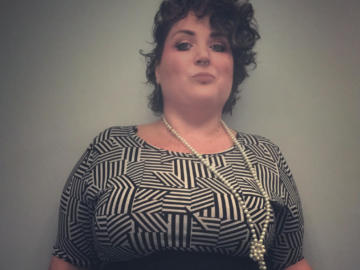
Read Rachel Melton's Story
“As a whole, there’s this idea of accessibility being– people get stuck on the idea of wheelchairs. Like, let me make sure we have ramps. We need to make sure that people can get into a building. But once you get into the building, you need to make sure that those programs [and content] are accessible as well.
And how do you make those programs accessible and also accessible for people that do have other physical disabilities – making sure that the exhibits are at a certain height so that they’re not too high? If they have to read things then maybe the print is bigger or you have audio elements.
I think, as a whole, everyone sort of moving in the direction of realizing that accessibility, not only benefits those with disabilities but also our entire community. Sometimes people don’t want to mention that they’re hard of hearing and that the print is too small or something, but by just doing these basic things, we’re actually making sure that everyone is more connected.
I don’t know about the rest of the world. But I think, for audio descriptions, specifically, I know that England and Canada are definitely a little bit farther ahead [than the US] on making those services a standard. Where, in the US, closed captioning has been part of TV and movies, my entire life. I’ve always been aware of what closed captioning was.
And now audio description is becoming much more available. And people are actually learning about it through just the fact that they can go on Netflix, and that’s one of the options that they can choose for about 40% of their movies. Where before, it just wasn’t talked about. It wasn’t even a thought for most people.”
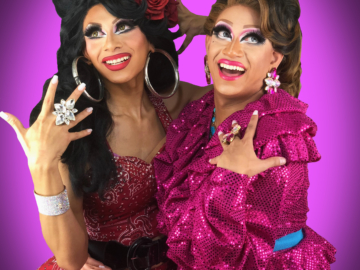
Read Deafie in Drag's Story
(Selena Minogue): I was Deaf since birth, and I have an older brother who taught me ASL from the beginning.
Casavina: I was supposed to be born hearing, but birth complications happened so I became deaf at an early age. I’m the only Deaf person in my family, and I grew up oral until I was taught sign language at age eight.
(Both): We both met at Gallaudet University (the only Deaf university in the world) and we were introduced by our mutual friends. We eventually started dating a few months later. Now we’ve been together for seven years.
Selena Minogue is an amazing storyteller with facial expressions, and Casavina loves filming and editing videos. Together, we created one-man skit shows. When we both saw RuPaul’s Drag Race season 2, it inspired us to get into drag for skit videos. We enjoyed acting as different characters and being drag queens for stage shows.
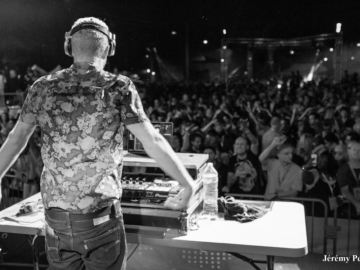
Read Nico's Story
My biggest role model is my mom. She’s a single mom who raised three boys. Just seeing what she went through, and how she made it – that’s a role model I wish I could become. Growing up in a deaf family was normal. There were no communication barriers. I assumed everyone had the same experience until I started making friends who were deaf and had hearing parents. They couldn’t communicate with their parents because their parents didn’t know sign language. It’s sad because they don’t really form relationships with their family members. It wasn’t until I got older that I realized how fortunate I was to be in a deaf family. My friends never had conversations at the dinner table with their parents. I couldn’t imagine not having a conversation at the dinner table because it was a huge part of my upbringing. I’m so lucky to have a deaf family and to have my experience be all-inclusive because everybody was apart of that.
Sadly I get discriminated against as a deaf person. I think as a deaf DJ, oftentimes people don’t trust my abilities because I can’t hear. Sometimes I won’t get hired [for a gig]. There’s nothing I can do about being deaf, but there is something I can do about being a DJ. I think it’s about exposing people to the deaf culture and what it’s all about. Hearing is not a barrier for us. When people say we can’t do things, we constantly have to prove to people that we can do anything we put our mind to.
I have a lot of proud moments. One summer I went to Reims, France for a deaf festival. The festival was all about deaf talent and performances. They always hired deaf businesses, with the exception of the DJ, until they found out about me. I DJ’d for 7,000 people. I never experienced that before. It was like a concert! People were moving their hands along with the motions I was showing them. People were following me like I was someone – and I was like wait a minute, it’s me they’re following! It was really cool.
If I could give one piece of advice to deaf or hard of hearing people, I would tell them to do what you love. You can do it. Don’t wait. The most important part is doing your homework before you make your dream comes true. It takes baby steps to get somewhere, but if you do it right, you’ll get to the top.
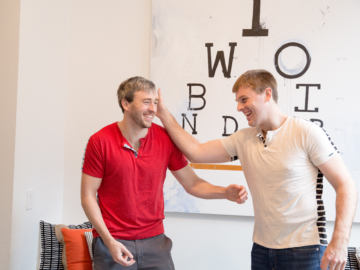
Read Bryan and Brad's Story
“BRAD: When you’re young with Stargardt’s disease, you still have a lot of functional vision. You don’t really realize there are things you’re not seeing.
One of the first moments of struggling was in first grade. My mum had told me that if I couldn’t see something on the board, I could walk up to the board to see it.
I took that as anything else she sort of told me to do, but then I remember in class having to get up out of my desk to go a foot from the chalkboard to read what the teacher had written on it, and not seeing anybody else in the class getting up to do that. It definitely hit me then – something was different.
That’s definitely the first time that I remember feeling different
BRYAN: My personal struggle is I very rarely recognize somebody after meeting them for the first time. Because of my vision, you could be anybody from my mum to the Pope, and I wouldn’t quite know.
Thankfully, a lot of people are very understanding. It’s one of those things that if you know somebody’s low vision, it is beyond helpful to just say, “Hey, it’s John.” If you give me the name, I can actually place where we had a conversation. But recognizing the face is always a little bit tough.”
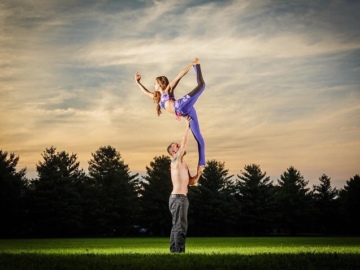
Read Tanya and Andrew's Story
“We’re able to socialize and communicate with people just like the rest of the world. The only difference is that we have a different language and other ways of communicating with each other. It’s an easy language to learn that requires patience and understanding. We have passion and we want people to know that we’re not going to live isolated and silent lives. We can do anything our hearts desire and we are capable of much more.
Being DeafBlind we have balance problems due to our inner ear equilibrium issues. In addition to this most instructors use verbal cues when teaching you the next steps of the progression instead of comprehending that I have a disability and accommodating me to help me learn the next progressions. I have gone to workshops where I have asked instructors to use microphone system that wraps around their arm which connects wirelessly to my hearing aids, so I can hear their instruction, however many instructors are not so kind when asking them to put it on. The easiest part is understanding your body movement and predicting the next progression because it simply feels right. Connecting and applying perfect balance allows you to move gracefully without even thinking about what happens next.” – Tanya
“We all live in a world that seems to crave more and more for instant gratifications. Time is essentially an DeafBlind individual’s biggest barrier. I have read that 80% of the information out there are delivered via the eyes and ears. Boy, that is a lot of information! Certainly, we need more time to process all of those information!
Ironically enough, I would say the easiest and hardest part [of doing acroyoga] is interchangeable. DeafBlind people are extremely tuned in with their own bodies. They can detect a slight change in the air or gravity. Yeah, I am saying we are mutants! Step aside, X-Men! Anyhow… when I am being the base supporting a flyer, I can certainly detect whether the fulcrum feels good or not. I can adjust to the flyer or the flyer can adjust to me. Of course, like Tanya said, we generally have horrible balance. So if the fulcrum is off just too much, just run for your lives!” – Andrew
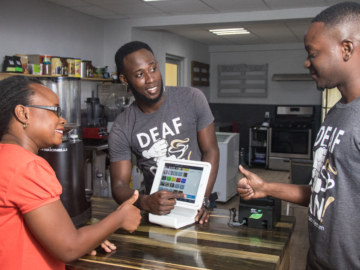
Read Deaf Can! Coffee's Story
“After Deaf Can! Coffee opened, people started hearing about it and coming. They were very curious, especially about the name, Deaf Can. They’d ask, “What does that mean?”
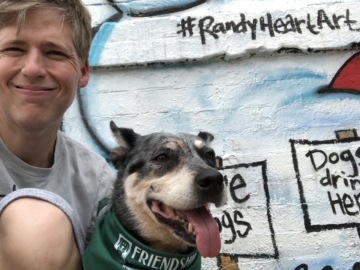
Read Michael's Story
“I grew up, identifying myself as a big D, capital D – Deaf. I emphasize that because of the culture of my deafness. But I wasn’t really sure if I was hard of hearing or not. I had a lot of friends who signed, but all of them signed English, called S-E-E, SEE. So I was kind of stuck. But I didn’t meet a lot of deaf people out in the community.
Then when I entered high school, I started to meet different people, and in college too. That’s when my bubble burst. Oh, man, did I really get engrossed in everything! I still struggled with my identity during that time. I went to Gallaudet, and I also had my own little culture from growing up. And I had to assess myself.
Then I felt like I was really a Deaf person very strongly. So I really got motivated to match with the ASL. And that’s when I became and started to identify with the big D capital Deaf.”
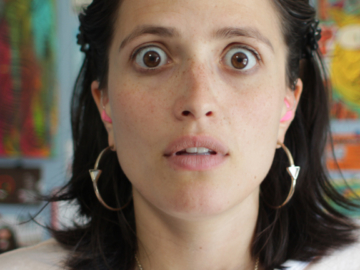
Read Jessica's Story
“There are so many crazy myths [about Deaf people] out there. I think my top ‘favorite’ one is, ‘All Deaf people can lip-read.’
I remember when I first was asked if all Deaf people could do that and I was like, ‘Uhmm… Can you even lip-read? Oh, you can’t? Because it’s hard right?’
I think it’s funny how easy some people think lip reading is until they’ve actually tried it themselves. Then after they’ve tried it they are like, ‘Oh wow, this is WAY harder than I thought.’”
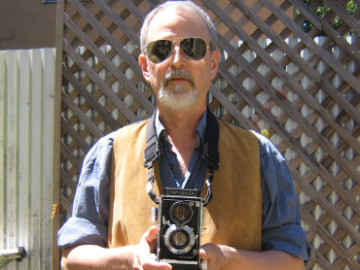
Read Pete's Story
“I adapted, but I didn’t know what was going on. And it took a couple of years before I was diagnosed with what was going on. But I struggled.
I’m adapted to blindness. It’s not my greatest struggle.
I’ve been totally blind for about 30 years, and the hardest thing for me to overcome is the assumptions of sighted people. Not blindness itself, but the assumptions of sighted people. Their preconceptions, their prejudice of what it’s like to be blind.
The blind label encumbers a whole bunch of, like you say, spectrum of blindness. I’m totally blind, and so when I function, people think I’m mysterious or magical or, how do you do that? But it’s a slippery slope. When you don’t function, people think that you can’t function at all, and actually, people start talking to you louder, as if you can’t hear or grabbing hold of you as if you can’t walk.
This is the best time in history to be a blind person. Technology, the adaptive aids and equipment, that dogs are, by law, supposed to be available and you can take them anywhere. We live in a very good time for blind people.”
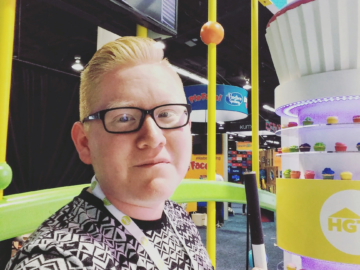
Read JD's Story
“I was first introduced to the YouTube community through music. I followed pianists like Kyle Landry and Sherry Kim and they were my inspiration for playing.
It wasn’t until I started contemplating my sexual orientation that I discovered the vlogging community and coming out videos. I wanted that same sense of community and resource to those living with disabilities.
So I started talking about my experiences living with albinism and low vision.
I’m almost positive that when people hear the phrase ‘visual impairment’ they think of someone who cannot see completely.
A majority of the blind community are people with low vision. We can still see a little, or most of the detail of what we’re looking at, it just depends on environmental conditions. I am visually impaired, but I am also a painter, and I coach soccer.”
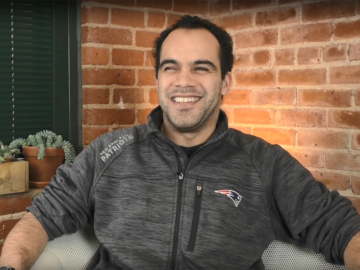
Read Alex's Story
What would you like tech companies to keep in mind?
“Probably the only thing I would like them to know is, if the deaf community is important to them, continue to be active and involved with the deaf community.”
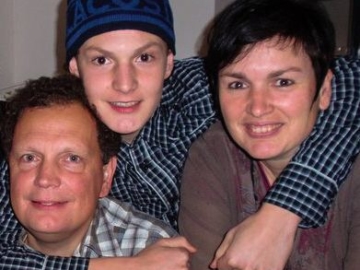
Read Jari's Story
“I’m really lucky and happy to be able to meet the people within the hearing loss community. They are all from different kinds of backgrounds and varying degrees of hearing loss, some people have come to terms with their hearing loss. Some people haven’t. Some people try to hide it. Some people are very expressive with it.”
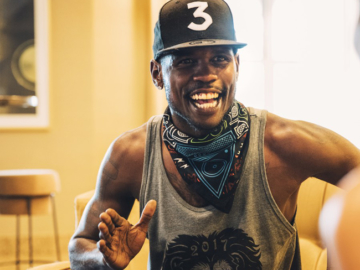
Read Matt's Story
“I’m not so much trying to bring in more interpreters, but trying to improve the quality of music. The whole idea started from me watching interpreters. I was like, OK, I’m deaf, and I’m learning sign language… why can’t I understand the interpreter?”
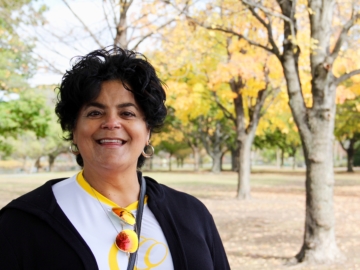
Read Iraida's Story
“Not knowing that she had hearing loss before three, I felt guilty because I work in early intervention. I didn’t even notice it. So I was feeling guilty for a long time. We made up for the years that we lost.”
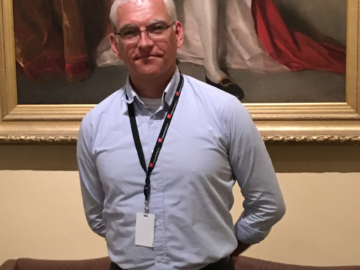
Read Leon's Story
“I was born and raised in a more oral method of instruction for the deaf where they teach you to speak and understand lip-reading. My father didn’t actually permit me to sign. And that was the 1970s or so. My mom did sign a little bit, mainly just home signs (invented gestures), but my father required me to speak when he was around.”
Read Donna's Story
“When my hearing changed so dramatically, I wondered how I would be able to continue working… I couldn’t see a path forward with how I would function in my personal life and my work life. For me, getting a cochlear implant gave me my life back.”
Read Charlie's Story
“Deaf dogs are known for being more frightened because of the way that people treat them. It has nothing to do with them.”
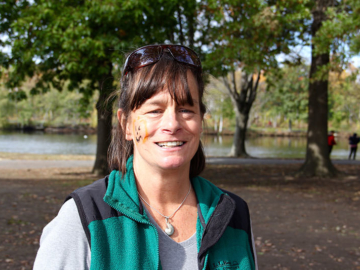
Read Betsy's Story
“I remember playing telephone and noticing that I had to completely turn so they’d talk in my good ear.”
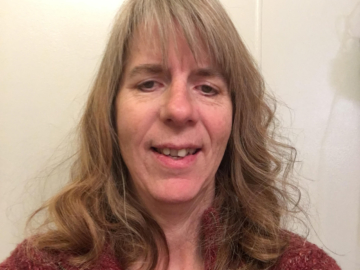
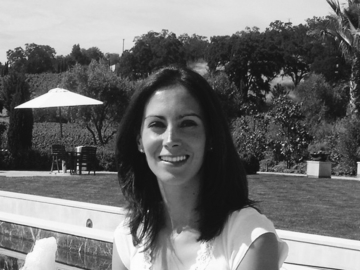
Read Lilian's Story
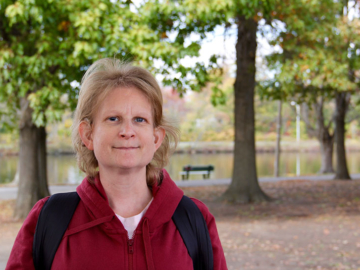
Read Liz's Story
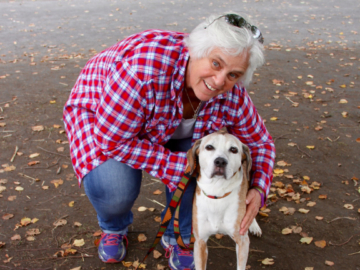
Read Sue's Story
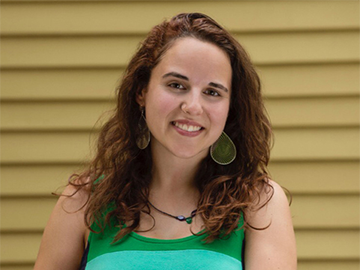
Read Anna's Story
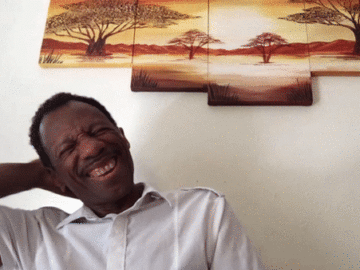
Read CJ's Story
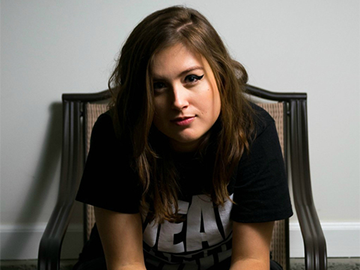
Read Rikki's Story
What is the best thing about being deaf?
“I hear screaming/crying babies less. Unfortunately, sometimes, I can still hear them depending on how close they are, but for the most part, the sound is less for me than it would be a hearing person. Sorry, babies. I understand why you cry, but it hurts.”
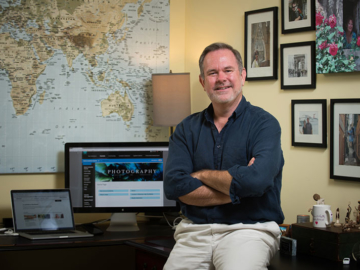
Read Scott's Story
“My parents are both deaf, and ASL was my first language. English is actually a second language for me.
In our family we had a footstool that would sit by the TV, and that was the interpreter’s footstool because we didn’t have closed captioning back then. Growing up there was the Vietnam War, and that [was] the first war that was really televised. So I would sit on the footstool next to the TV and interpret the news and update Mom and Dad.”
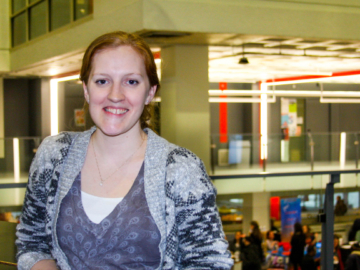
Read Tamara's Story
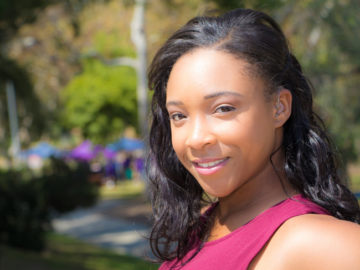
Read Treshelle's Story
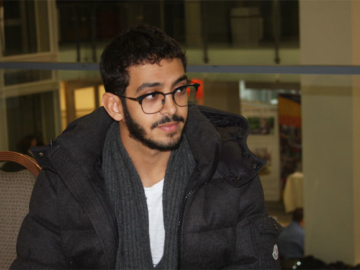
Read Mohammed's Story
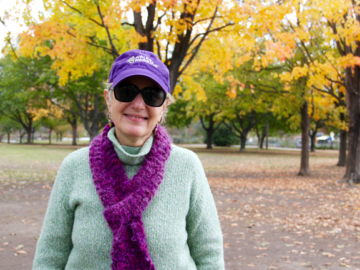
Read Peggy's Story
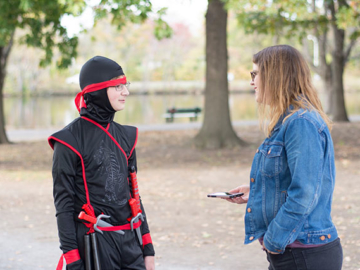
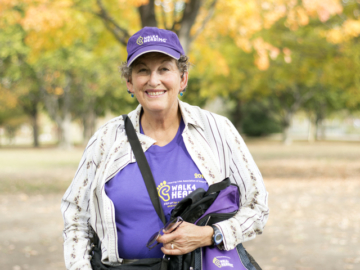
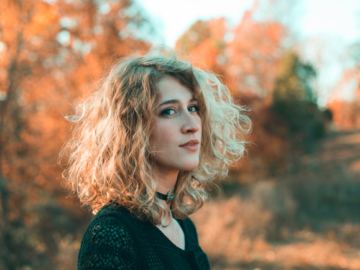
Read Zoe's Story
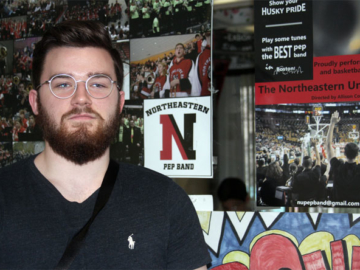
Read Gage's Story
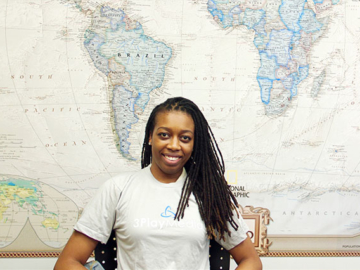
Read Nia's Story
“Seeing the world. It’s a visual world. I love it. I think about it every day.
I feel blessed to be deaf. I just couldn’t imagine not being deaf.”
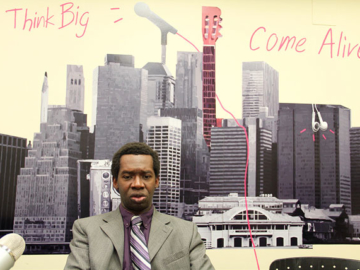
Read Chris' Story
And I was the way to keep them apart by being actually put right in the middle of them during third grade. And just like you would have neighbors who might speak Spanish or a different language just by proximity, I started to pick up American sign language.”
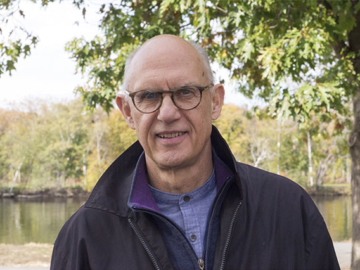
Read Stu's Story
Suddenly an air horn, like on a boat, went off in the left ear. It was probably a blood vessel bursting. A year and a half later — right ear.
No music for 35 years.”
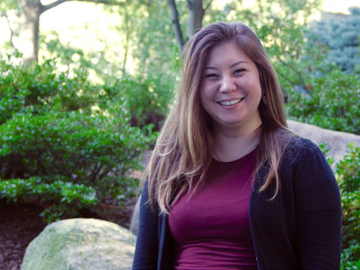
Read Alicia's Story
“Always. I think I started to realize it when I was in middle school. I was in a group of friends. And they all decided that they didn’t want to be friends anymore because I never talked. Because I was a quiet person.
And they said, you can’t be friends with us anymore because we don’t know who you are.”
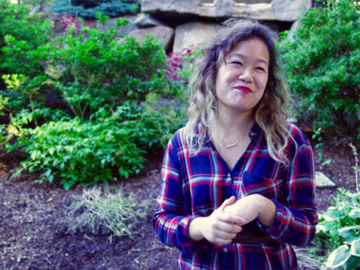
Read Crystal's Story
It sucks, but I’m used to it. How else can I get my message across? I don’t really have a choice.”
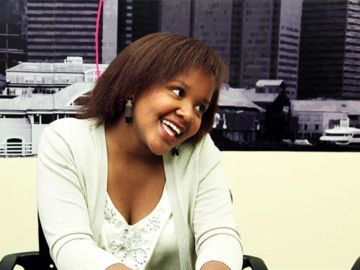
Read Lena's Story
And she made a Facebook post and said, ‘I’m aware of you, my hard-of-hearing unicorns.’ And it was like, oh, my god.”
